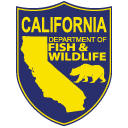 Pismo clams have historically been found as far north as Half Moon Bay; more recently, they have been difficult to find north of Pt. Conception. They prefer the intertidal zone, especially flat, sandy beaches on the open coast, but may be found offshore to a depth of 80 ft. Pismo clams may also be found in the entrance channels of bays, sloughs, and estuaries. Because they possess short siphons, they are generally found near the surface of the sand.
Pismo clams have historically been found as far north as Half Moon Bay; more recently, they have been difficult to find north of Pt. Conception. They prefer the intertidal zone, especially flat, sandy beaches on the open coast, but may be found offshore to a depth of 80 ft. Pismo clams may also be found in the entrance channels of bays, sloughs, and estuaries. Because they possess short siphons, they are generally found near the surface of the sand.
Distinguishing Characteristics
- Pale beige to brown, but varies considerably in color and pattern
- May have brown radiating marks on outer shell, from hinge to rim
- Shells thick, heavy, strong
- Outside of shell has fine, concentric growth lines, and a yellowish, tan, or green varnish-like coating
- Inside of shell white
Life History & Other Notes
Pismo clams feed on plankton and bits of food suspended in the water. Most Pismo clams spawn from June through September. Females may produce up to 20 million eggs per spawn. The young settle to the sandy bottom and attach themselves to sand grains by means of sticky threads. When the larvae have developed sufficiently, the threads disintegrate and the young clams bury themselves in the sand.
Clammers find these clams by probing wet, exposed sand with four- to six-tined gardening forks during low tide. The clams can also be found by looking for half-inch long tufts of the hydroid Clytia bakeri that attaches to the shell and is exposed above the sandy beach surface.
Pismo Clam Quick Facts
Scientific Name: Tivela stultorum
Other Common Names: Giant tivela
Range & Habitat: Half Moon Bay southward, but mostly south of Pt. Conception on flat, sandy beaches
Length: To 7+ in.
Life Span: To 53 years
Diet: Feeds on suspended plankton and detritus
Excerpt from the California Finfish and Shellfish Identification Book.
Single copies of the book are available to California residents free of charge by emailing a request to publications@wildlife.ca.gov.

